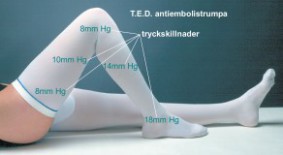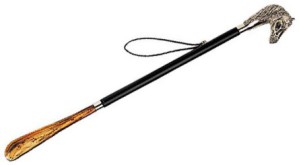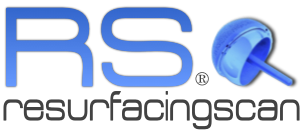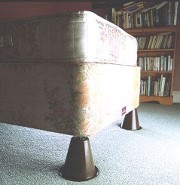Hip operation preparations
Hip operation preparations
When the time is ripe and once you have booked a hip operation it will also be time to prepare a number of things. Apart from pure physical pre- and post-operative aids that can be needed (differing from person to person and case to case) in your home there is more to consider. The hip operation preparations and guidelines on this page will surely be appreciated, not the least by those that live alone.
Participation in a support group
- Perhaps one of your most important and simple steps ahead of your operation can be the participation in a support group like our own Facebook Nordenshippies that focuses on all questions related to hip problems. The participants convey their experiences on hip problems, hip diseases, prostheses, orthopedic surgeons, clinics, hospitals, rehabilitation, costs, really anything related to hip problems. The combined knowledge and experience is an important source of information for all hip patients, either pre- or post-operative.
The mouth
- Are your teeth and mouth in general in a good and healthy condition? Some weeks before and the first months following a hip operation you should ideally not require any dental work and certainly not any that are planned, not even….or better said especially not any dental hygienic work.
The reason for naming the mouth is the possible bleeding during dental work and the realistic chance that some of the many bacteria that exist in the mouth also finish up in the bloodstream. In turn they can be transported to the newly operated hip and cause a difficult to beat infection. In an emergency when you still need dental intervention that can cause bleeding it should only be attempted after serious consideration of a profylactic treatment with anti-biotics to protect your hew hip. When plaque and tartar are scraped away from the teeth by a dentalhygienist there will also be bleeding from the gums that were touched or accidentally scraped. The coctail of bacteria freed with the plaque removal poses a real infection threat then. Always consult the hip surgeon first when you have an upcoming dental treatment just prior to or just after the operation.
Medicines
- You will have to show your hip surgeon if you use any medicines or other supplements. The days prior to your operation you should not be taking any tablets with glucosamine, chondroitine or MSM or for that matter any other painkillers that can increase the chance for bleeding and thereby complicate the surgeon’s work. Some of the medicines and supplements that you take may interact and increase or decrease the anaesthetic agensts that the surgeon intends to use. A question about medicines and supplements that you commonly take is also taken up in the questionnaire that I normally send you. But please consult your surgeon if you still wonder about something.
Body weight and condition
- Overweight and underweight conditions are no advantages for the application of hip resurfacing, in extreme situations the weight may have to be stabilized at a more acceptable level before an intended operation can be performed. It is always best to try and maintain a good condition and normal weight, which will also be advantageous for the rehabilitation, shortening it and making it smoother as well. Under “Hip Resurfacing”-> “Tables” you will find information on the BMI (Body Mass Index) in which you can compare your weight with the given table.
90-degree rule
- The 90-degree rule or restriction and the following 9 points do stricktly speaking not fall under “Hip operation preparations” but it is good to be aware of them ahead of the operation so that any required aids can be acquired in good time. After a hip operation and regardless of the exact type of prosthesis that is involved each patient does initially have to be careful with certain leg movements. It will for example not be allowed to draw the knee of the operated leg towards the chest but in stead a 90 degree angle will apply. The thybone or femur should not be allowed to come under an angle that is less than 90 degrees with the chest. Your surgeon can inform you how long exactly he/she wants you to maintain this restriction but generally this lies between 6 weeks and 3 months. This rule or restriction may prevent you from doing or participating in certain things. Driving a car and certain occupations can suffer under this restriction the first weeks, so check with your surgeon in advance what he/she will expect from you.
The reaons for this rule are among other things the tissues and sutures in and near the hip that are not allowed to be exposed to forces until everything has had a chance to first heal properly.
Physiotherapist
- If you didn’t already have a physiotherapist it will be good to: consult a physiotherapist in your neighbourhood and prior to the operation try to plan or even book time with him/her for treatment post-operative.
Essential aids:
Hjälpmedelsinstitutet in Sweden holds a register on all the retailers in Sweden that sell aids and medical equipment…
- If you didn’t already have a pair of crutches you can either loan, hire or buy them. The underarm model is most common for hip operations without complicating factors. With them you will already be putting some load on the hip and start to train the muscles to more and more regain your strength. In particular with hip resurfacing it is common to load the hip immediately after the operation. Your physiotherapist can advise you in this but even your physiotherapist or the local hospital or a local “hjälpmedelscentral” or medical equipment supplier. In Sweden and other countries with occasional snow and ice conditions the crutches should even have provisions with spikes that can be flipped under the rubber pads to prevent them from slipping on icy surfaces.
- In some situations bed raisers can be required, more so if you have an extra low bed to start with. Obviously many people can make them from some stirdy pieces of wood but you can loan, rent or buy ready made and cheap raisers from the Internet. There are models in wood or plastics. It is not unlikely that a “hjälpmedelscentral” in your neighbourhood can help you with this need. Remember that you are the first weeks after your operation not allowed to break the 90-degree rule.
Raised toilet seat
- Depending on your anatomy, your strength, the height of your toilet and the amount of space in front ot the toilet a raised toilet seat of some kind may be needed.
 This should prevent you from breaking the 90-degree rule during toilet visits and minimizes the amount of effort required to sit down or stand up. Raised toilets and seats exist in a range of sizes and models. Some actually raise the existing toilet and seats and others are completely free standing with a frame that also can be placed over an existing toilet. Some even have handlebars to give you support when sitting down or standing up. Your “hjälpmedelscentral” should be able to advice and a purchase through Internet is another option.
This should prevent you from breaking the 90-degree rule during toilet visits and minimizes the amount of effort required to sit down or stand up. Raised toilets and seats exist in a range of sizes and models. Some actually raise the existing toilet and seats and others are completely free standing with a frame that also can be placed over an existing toilet. Some even have handlebars to give you support when sitting down or standing up. Your “hjälpmedelscentral” should be able to advice and a purchase through Internet is another option.
Shower stool
- A shower stool can prevent you from slipping and falling in the shower while you still feel unstable after your hip operation. The model that you purchase
 should not be too low, just as with the raised toilet seat to prevent you from breaking the 90-degree rule. You would also do wise to check the feet under the stool that should not be too smooth but have a rough surface. If the feet are made from normal plastic you can possibly give them some self sticking felt or rubber pads that you can give the required shape. Don’t forget to test the effect of your changes on a wet floor in the shower! There are stool models that can be adjusted in height so it fits all persons and situations. Soem are fitted with removable handlebars. Ask your local “hälpmedelscentral” for advice if reuired.
should not be too low, just as with the raised toilet seat to prevent you from breaking the 90-degree rule. You would also do wise to check the feet under the stool that should not be too smooth but have a rough surface. If the feet are made from normal plastic you can possibly give them some self sticking felt or rubber pads that you can give the required shape. Don’t forget to test the effect of your changes on a wet floor in the shower! There are stool models that can be adjusted in height so it fits all persons and situations. Soem are fitted with removable handlebars. Ask your local “hälpmedelscentral” for advice if reuired.
TED or T.E.D. compression stockings
- When you consider the purchase of a pair of TEDs or ThromboEmbolism-Deterrent stockings please ask your surgeon for advice. TEDs can assist in the prevention of oedema and thrombosis following a hip operation.
 Normally the thy high model is used, but again check this with your surgeon just as the time that he/she recommends you to use the stockings! The stocking manufacturers have an application table with sizes, compression facors and how to apply this. Some surgeons supply TEDs as part of their routine. Otherwise TEDs can be ordered from the Internet but your “hjälpmedelscentral” can surely advise and supply them too.
Normally the thy high model is used, but again check this with your surgeon just as the time that he/she recommends you to use the stockings! The stocking manufacturers have an application table with sizes, compression facors and how to apply this. Some surgeons supply TEDs as part of their routine. Otherwise TEDs can be ordered from the Internet but your “hjälpmedelscentral” can surely advise and supply them too.
Sock or stocking aid
- Sock and stocking aids exist in various types and models, they make life a lot easier at times when you can’t or just aren’t allowed to bend down, for example when you have to obey the rule for those sacred 90 degrees!
Shoe horn
- Regardless of your age or anatomy, with hip problems and prior to or a short period a hip operation a shoe horn will be found very helpful. When you purchase one its length should be sufficient to prohibit you from having to bend down too far putting on shoes etc.

Grabber and reacher
- Smaller objects that are on the ground are difficult to reach after a hip operation but a grabber or reacher can help here. As with all the previous points a grabber can help you prevent to break the 90-degree rule in many small and everyday duties.
Pillow
- There are pillows and props of different form that can be useful to raise a chair’s seat or to place under the knee/leg of the operated leg in your bed. Even in bed you should not allow your operated leg to drag on your hip when you pull in your kneee and while your sleep on the non-operated side. A thinner pillow or prop can then be a useful item. Ask your “hjälpmedelscentral” to show you some models.
Meanwhile try to continue as much as the situation allows with your exercises and training as long as the hip itself is not loaded and aggravated by them. Light pain and occasional use of pain medication is generally not objected to by surgeons, but make sure that you follow his/her recommendations. It is advantageous to go into your operation with a good condition, possibly aiding in a smoother and shorter rehabilitation period.


